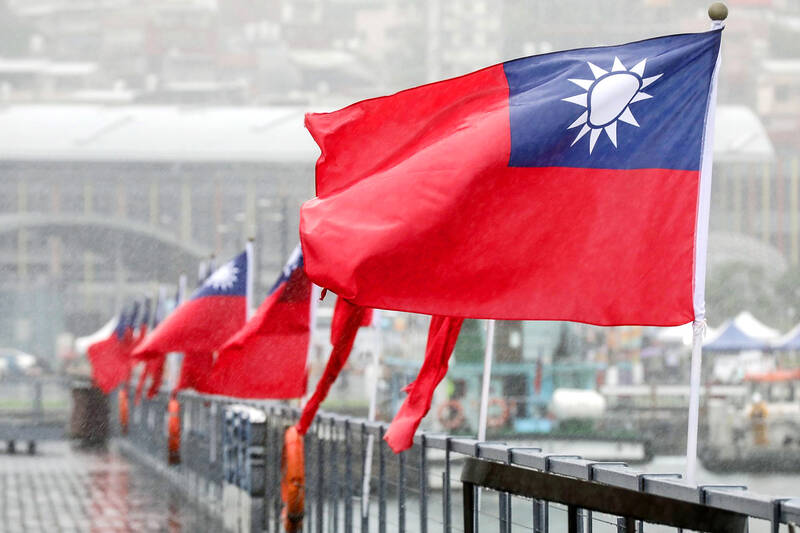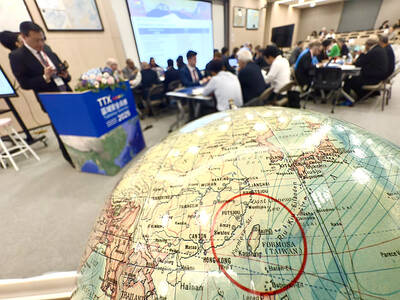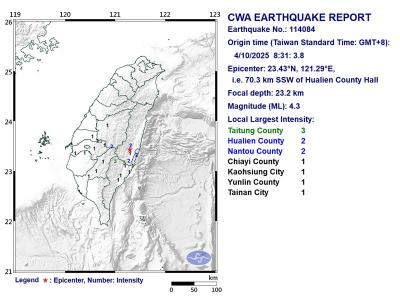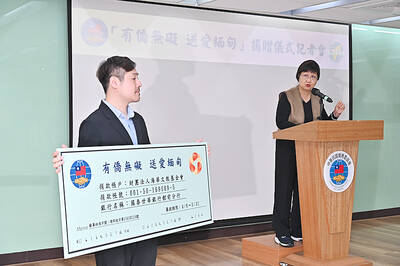A poll released by the Taiwanese Public Opinion Foundation yesterday showed 48.9 percent of Taiwanese support obtaining formal national independence, while 26.9 percent support maintaining the “status quo” and 11.8 percent support unification with China.
Support for Taiwanese independence topped support for maintaining the “status quo” by 22 percentage points and Chinese annexation by 37 percentage points, foundation chairman Michael You (游盈隆) said.
An overwhelming majority of respondents aged 20 to 44 voiced hope that Taiwan can declare independence in the future, he added.

Photo: Cheng I-hwa, Bloomberg
The result indicates most Taiwanese want the country to become independent, but understand the political constraints and the need for strategic patience, You said.
The number of respondents who wish Taiwan would become independent increased by 4.9 percentage points and those who showed support for maintaining the “status quo” increased by 2.9 percentage since last year’s survey, he said.
These changes indicate a “clear mainstream movement toward achieving national independence in the future,” he added.
A question in the survey asked respondents to choose between Taiwanese independence or unification with China should the “status quo” become unsustainable.
In response, 41 percent of those who initially supported the “status quo” said they would support independence, 18.3 percent switched to support unification with China and 40.7 percent said they would support the “status quo” regardless, You said.
Judging from the responses to that question, 59.9 percent of Taiwanese are pro-independence, 16.7 percent are pro-unification and 10.9 percent support extending the “status quo” indefinitely, he said.
Taiwanese independence is supported by a majority of respondents in every age group, all groups divided by educational attainment except associate degree holders and all professional groups including military service members, civil servants and teachers, he said.
Independence supporters make up the largest segment of respondents in every county and city except for Taoyuan, where support for the “status quo” prevailed, You said.
The poll showed that 72 percent of respondents identifying themselves as Democratic Progressive Party supporters are in favor of independence, 1 percent support the “status quo” and 5 percent support unification with China, he said.
Meanwhile, 18 percent of respondents identifying themselves as Chinese Nationalist Party (KMT) supporters are in favor of independence, while 36 percent support the “status quo” and 35 percent support unification, You said.
The poll found 43 percent of self-identified Taiwan People’s Party supporters also support independence, while 40 percent support the “status quo” and 8.5 percent support unification with China, he said.
The foundation conducted the survey on Aug. 14 and Aug. 15 with Taiwanese aged 20 or older via both cellphone and landlines. The survey had 1,081 effective samples, and claimed a margin of error of 2.98 percentage points.

Taiwan is stepping up plans to create self-sufficient supply chains for combat drones and increase foreign orders from the US to counter China’s numerical superiority, a defense official said on Saturday. Commenting on condition of anonymity, the official said the nation’s armed forces are in agreement with US Admiral Samuel Paparo’s assessment that Taiwan’s military must be prepared to turn the nation’s waters into a “hellscape” for the Chinese People’s Liberation Army (PLA). Paparo, the commander of the US Indo-Pacific Command, reiterated the concept during a Congressional hearing in Washington on Wednesday. He first coined the term in a security conference last

DEFENSE: The National Security Bureau promised to expand communication and intelligence cooperation with global partners and enhance its strategic analytical skills China has not only increased military exercises and “gray zone” tactics against Taiwan this year, but also continues to recruit military personnel for espionage, the National Security Bureau (NSB) said yesterday in a report to the Legislative Yuan. The bureau submitted the report ahead of NSB Director-General Tsai Ming-yen’s (蔡明彥) appearance before the Foreign and National Defense Committee today. Last year, the Chinese People’s Liberation Army (PLA) conducted “Joint Sword-2024A and B” military exercises targeting Taiwan and carried out 40 combat readiness patrols, the bureau said. In addition, Chinese military aircraft entered Taiwan’s airspace 3,070 times last year, up about

A magnitude 4.3 earthquake struck eastern Taiwan's Hualien County at 8:31am today, according to the Central Weather Administration (CWA). The epicenter of the temblor was located in Hualien County, about 70.3 kilometers south southwest of Hualien County Hall, at a depth of 23.2km, according to the administration. There were no immediate reports of damage resulting from the quake. The earthquake's intensity, which gauges the actual effect of a temblor, was highest in Taitung County, where it measured 3 on Taiwan's 7-tier intensity scale. The quake also measured an intensity of 2 in Hualien and Nantou counties, the CWA said.

The Overseas Community Affairs Council (OCAC) yesterday announced a fundraising campaign to support survivors of the magnitude 7.7 earthquake that struck Myanmar on March 28, with two prayer events scheduled in Taipei and Taichung later this week. “While initial rescue operations have concluded [in Myanmar], many survivors are now facing increasingly difficult living conditions,” OCAC Minister Hsu Chia-ching (徐佳青) told a news conference in Taipei. The fundraising campaign, which runs through May 31, is focused on supporting the reconstruction of damaged overseas compatriot schools, assisting students from Myanmar in Taiwan, and providing essential items, such as drinking water, food and medical supplies,